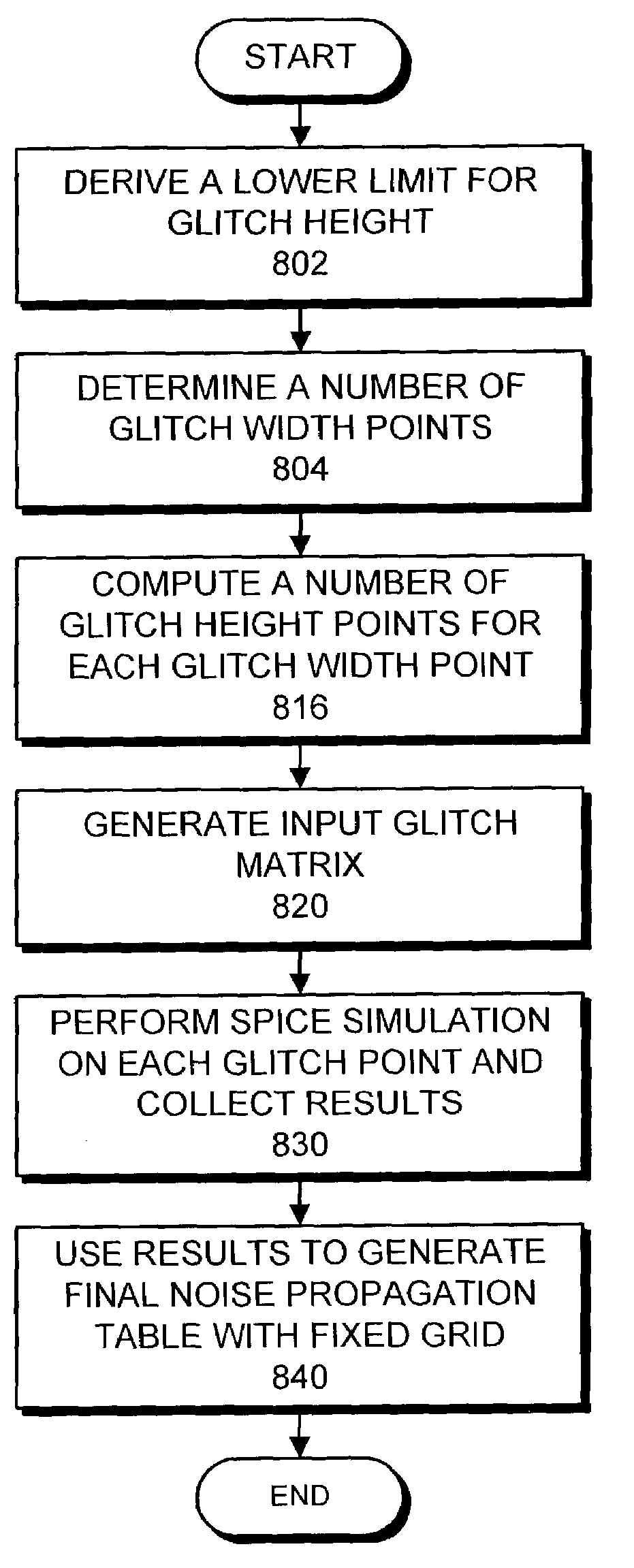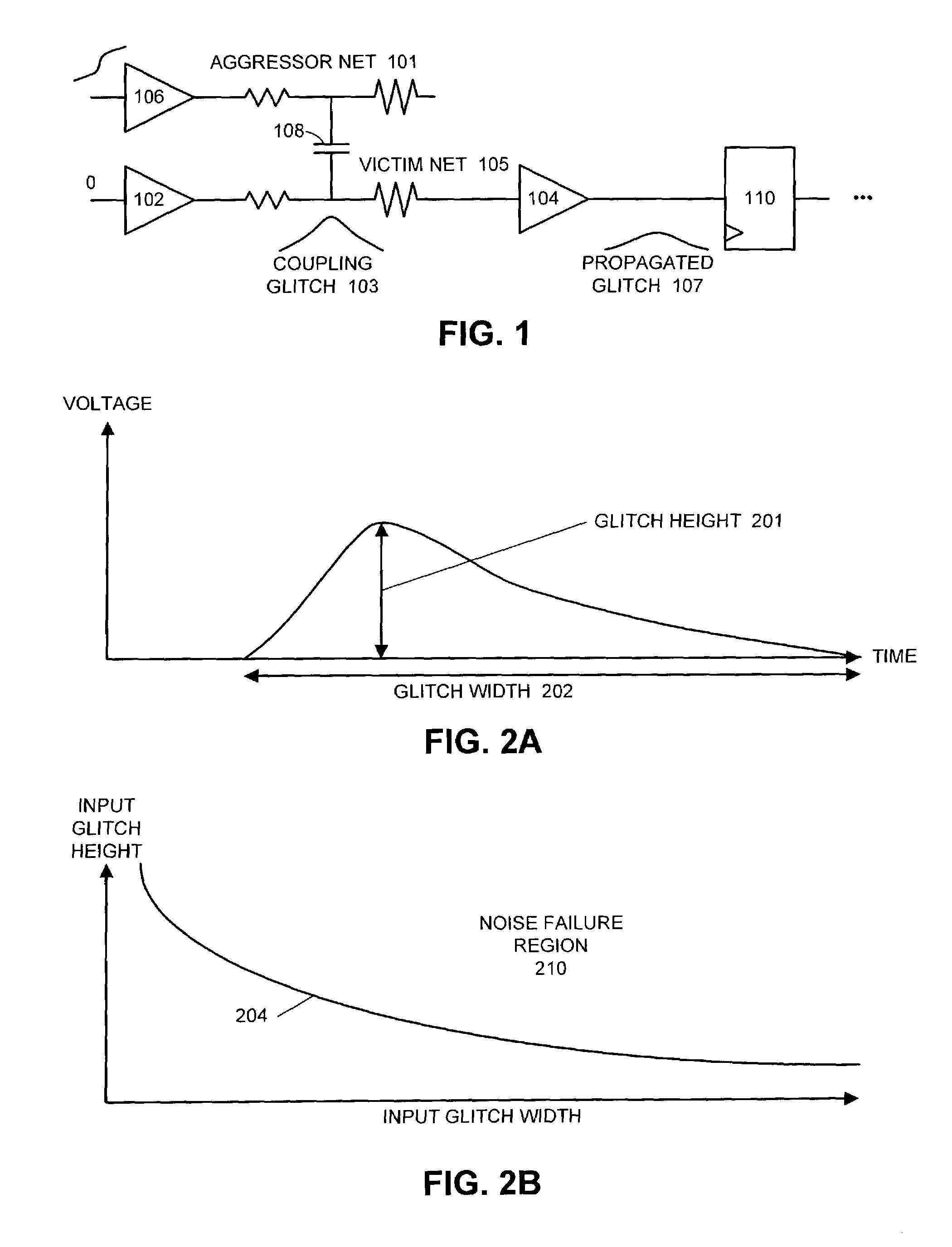Method and apparatus for characterizing the propagation of noise through a cell in an integrated circuit
- Summary
- Abstract
- Description
- Claims
- Application Information
AI Technical Summary
Benefits of technology
Problems solved by technology
Method used
Image
Examples
Embodiment Construction
Modeling Noise
[0034]FIG. 1 illustrates how noise can be modeled in accordance with an embodiment of the invention. As is illustrated in FIG. 1, there is capacitive (and possibly inductive) coupling 108 between an aggressor net 101 and a neighboring victim net 105. Because of this coupling, a transition on aggressor net 101 induces a “coupling glitch”103 on victim net 105. Note that the I / V characteristics of an upstream driver 102, as well as the load on victim net 105 affect the size and shape of this coupling glitch 103.
[0035]Coupling glitch 103 feeds into a driver 104. If coupling glitch 103 has sufficient energy, it can cause a propagated glitch 107 at the output of driver 104. This propagated glitch 107 can possibly cause a functional failure in a downstream cell 110. Note that coupling glitch 103 can also combine with a propagated glitch from upstream driver 102 to generate an input noise signal for driver 104.
[0036]Drivers 102 and 104 and cell 110 can generally be any type of...
PUM
 Login to view more
Login to view more Abstract
Description
Claims
Application Information
 Login to view more
Login to view more - R&D Engineer
- R&D Manager
- IP Professional
- Industry Leading Data Capabilities
- Powerful AI technology
- Patent DNA Extraction
Browse by: Latest US Patents, China's latest patents, Technical Efficacy Thesaurus, Application Domain, Technology Topic.
© 2024 PatSnap. All rights reserved.Legal|Privacy policy|Modern Slavery Act Transparency Statement|Sitemap



